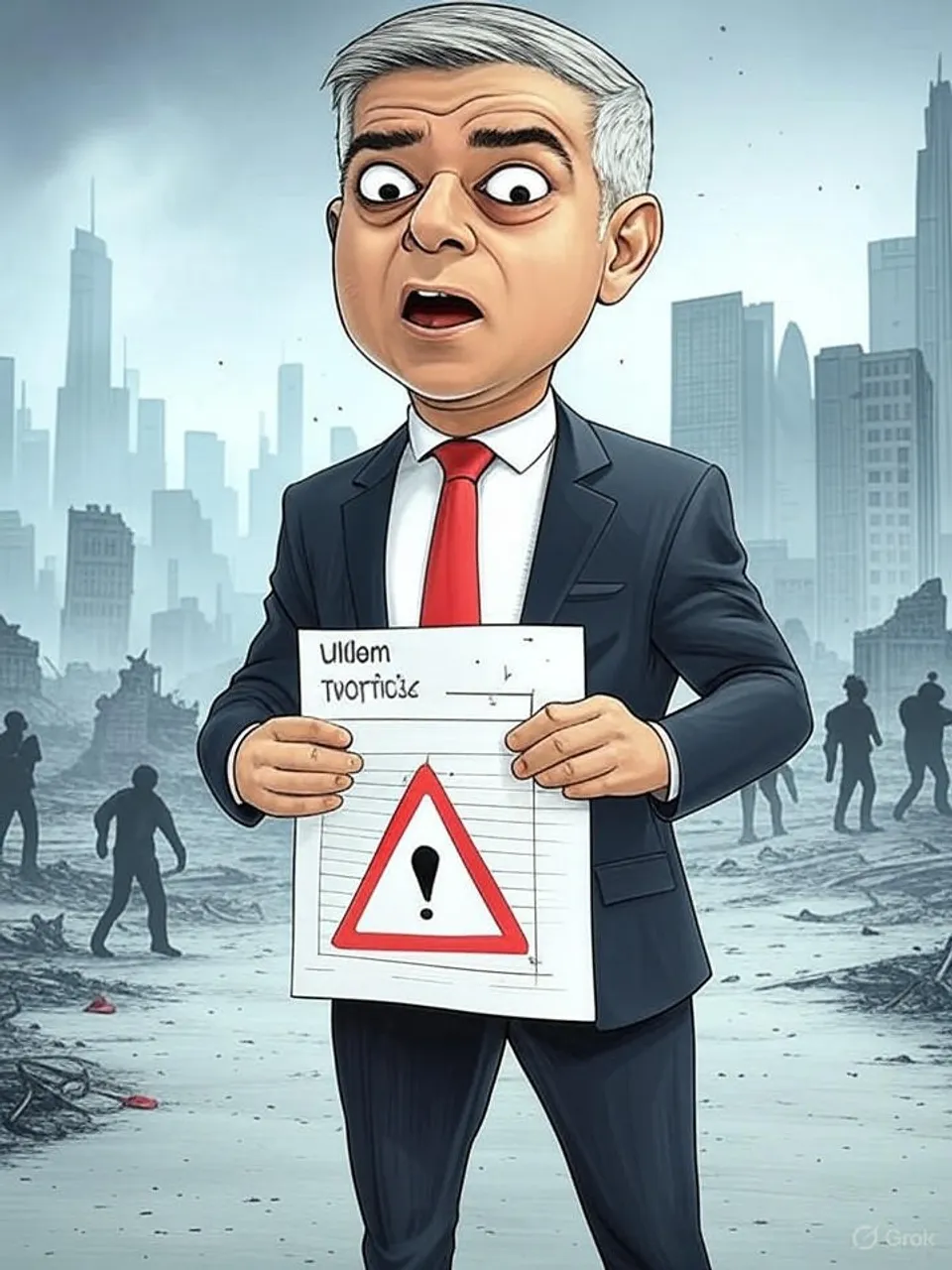Urban Metrics Mask London's Enforcement Void

Knife crime's 1% rise belies 14,000 incidents and shrinking police numbers
A Guardian defence of London cherry-picks data to dismiss crime concerns, ignoring absolute risks, resource cuts, and repeated policy shortfalls that signal broader urban institutional decay.
Commentary Based On
The Guardian
Say what you like about ‘Sadiq Khan’s no-go hellscape’ – Britain’s cities prove the rightwing agitators wrong
The Guardian article claims knife crime in London rose by just 1% last year, positioning the city as a bastion against right-wing exaggeration. This figure, drawn from Office for National Statistics data, contrasts with sharper increases elsewhere: 19% in Dorset, 31% in North Yorkshire, and 51% in Suffolk. Yet the comparison obscures London’s baseline volume, where absolute incidents remain far higher than in rural counties.
Urban density amplifies risks in ways percentages alone cannot capture. London’s Metropolitan Police recorded over 14,000 knife offences in the year to mid-2023, a number that dwarfs the totals in those comparator areas combined. The article’s focus on relative growth rates sidesteps this reality, presenting a sanitized view that aligns with defending Sadiq Khan’s tenure rather than examining enforcement shortfalls.
Policing resources tell a starker story. The Metropolitan Police force has shrunk by 3,000 officers since 2010, despite population growth and persistent violence on transport networks. Incidents like the recent Cambridgeshire train stabbing, which the article attributes to media desperation, highlight understaffed responses: British Transport Police numbers have fallen 10% in five years, leaving commuters exposed.
Khan’s administration has pledged repeated crackdowns on knife crime, yet delivery lags. A 2022 strategy promised 1,000 additional stop-and-search operations monthly, but audits show compliance below 60%. This pattern of announced measures without sustained impact repeats across mayoral terms, from Boris Johnson to Khan, underscoring institutional inertia in city governance.
The article frames anti-urban sentiment as populist myth-making, invoking global examples like Trump’s interventions in US cities. In Britain, however, urban decline stems from measurable policy failures, not mere rhetoric. Central government funding for police has declined 19% in real terms since 2010, forcing local authorities like the Greater London Assembly to ration resources amid rising demands.
Social media amplifies distortions, as the piece notes with Ricky Gervais’s unproposed advert. But platforms also document unfiltered realities: videos of unpatrolled streets and youth violence circulate daily, eroding public confidence. A 2023 YouGov poll found 62% of Londoners feel less safe than a decade ago, a sentiment the article dismisses as external prejudice rather than lived experience.
Economic pressures compound these issues. London’s housing costs have surged 25% since 2015, pricing out working-class residents and straining community ties. The article celebrates urban “fluidity and freedom,” yet ignores how this masks segregation: affluent areas thrive while outer boroughs grapple with 40% child poverty rates, per End Child Poverty data.
Deportation and migration enforcement gaps feed perceptions of urban chaos. The article alludes to Nigel Farage’s comments on “minority-white cities” but avoids data on foreign national convictions, which rose 62% for sexual offences in recent years. Such trends, tied to overwhelmed borders, persist under both Labour and Conservative national governments, burdening city services without resolution.
Right-wing critiques may oversimplify, but The Guardian’s rebuttal equally evades accountability. By recasting concerns as bigotry, it perpetuates a cycle where urban leaders face no reckoning for outcomes. This deflection benefits entrenched interests—developers, consultants, and politicians—who profit from stasis.
Britain’s cities, once engines of post-war prosperity, now embody systemic rot. London’s tale reveals how governance prioritizes narrative over repair: promises fade, resources dwindle, and ordinary citizens bear the cost. The uncomfortable truth is that urban vitality erodes not from external enemies, but from decades of cross-party neglect, leaving metropolises as monuments to unaddressed failure.
Commentary based on Say what you like about ‘Sadiq Khan’s no-go hellscape’ – Britain’s cities prove the rightwing agitators wrong by Jonathan Liew on The Guardian.